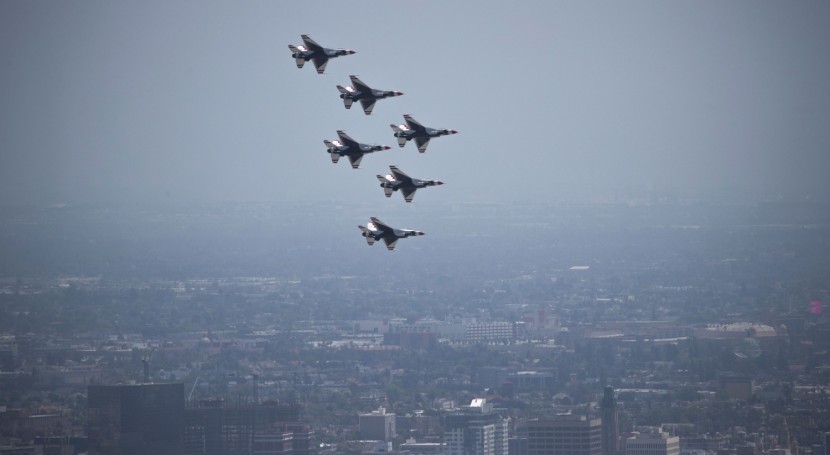
WASHINGTON - Inferior airlift planes like the C-17 Globemaster III and C-130J Super Hercules could transform into heavily-armed ammunitions trucks that can deliver massive destruction by airdropping large bundles of munitions.
Air Force's Warfighting Integration Capability cell's Deputy Director of the service of, Maj. Gen. Clint Hinote shared that the Air Force already conducted tests of palletized munitions and it went successful.
According to Defense News, during the Mitchell Institute for Aerospace Studies event on May 27, He mentioned that they are currently having discussions about proceeding to the prototyping and fielding process.
Based on the term itself, palletized munitions are defined as a group of weapons which are placed onto a smart pallet together, which would later provide targeting and tracking information to the munitions while they are dropped from a platform in the airlift. In February, they released information about the technology and they dubbed it as "a bomb bay in a box" which allows mobility planes and aircraft to stay out of danger zone while launching massive damage.
On January 28, the Air Force Special Operations Command conducted a demonstration of the new technology wherein they used an MC-130J to perform three airdrops of simulated palletized munitions at the Dugway Proving Ground in Utah.
The Research Laboratory of the Air Force mentioned in a released on May 27 that they used munitions stacked upon wooden pallets, or CEPs (Combat Expendable Platforms), which is deployed using a roller system.
They also added that the aircrew of the AFSOC released five CEPs equipped with 6 simulated munitions, has a similar weight with the actual weaponry, which includes four Cargo Launch Expendable Air Vehicles with Extended Range also known as CLEAVERS in a spectrum of low and high altitude airdrops.
According to Forbes, the Air Force Research Laboratory also clarified that they deployed simple long-range cruise missiles from an off-the-shelf pallet system including a crate system which is designed by the Air Force. CLEAVER or the Cargo Launch Expendable Air Vehicles with Extended Range is a new weapon which is currently developed by the lab as part of a separate effort that can be used in palletized munitions process in the future.
The AFRL also shared that the Air Mobility Command held the same demonstration with a C-17, wherein they were able to simulate airdropping of the palletized munitions on February 27.
AFSOC is currently planning to deploy states of simulated munitions which are more advance than the previous and be able to utilize full-up weapon vehicles which can be configured using a terminal guidance system and a warhead in their future demonstrations.
Moreover, the Air Force still looks for new technological options as they request for information in April wherein they sought information about both existing and new palletized munitions concepts. The branch hopes to utilize the information to ensure that experimentation efforts held in the future, including operational assessments and the palletized munitions systems acquisition.
On the other hand, if the effort moves forward, the question is which entity in the Air Force will have the command over the assets' mobility.
Even Hinote emphasized that extremely streamlined control and the command is necessary but cultural barriers inside the Air Force could more challenging than the technological aspect of making the palletized munitions.
Related article : US Air Force Wants to Upgrade Airlift Planes as Weapon Trucks
© 2025 HNGN, All rights reserved. Do not reproduce without permission.








